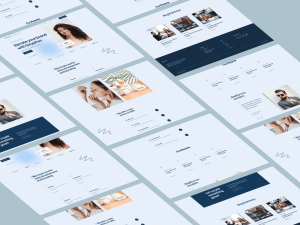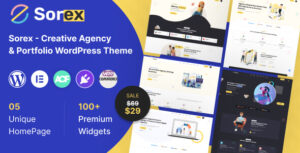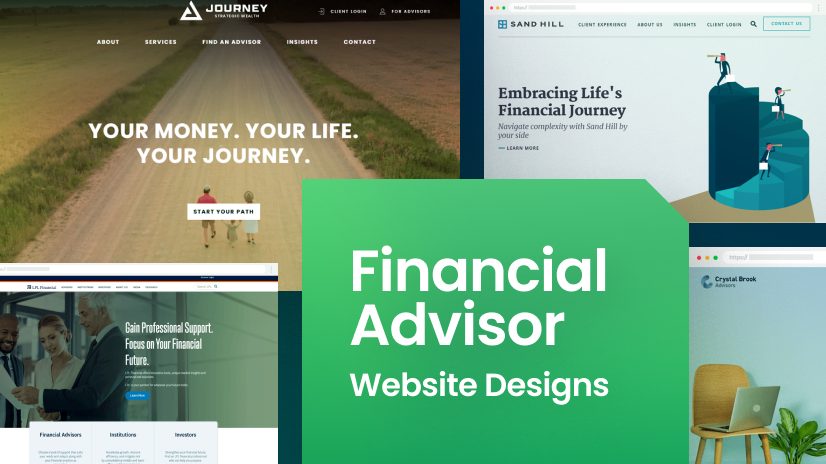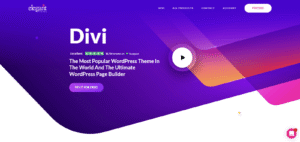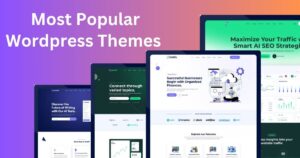Are you struggling to make your insurance business stand out in the crowded online marketplace? Do you want to attract more clients without spending a fortune on web design?
In today’s digital landscape, insurance companies, agencies, and individual agents must establish a strong and credible online presence to stay competitive. With more customers searching for services online, your website is often the first impression people have of your business.
But building a high-performing website from scratch can be time-consuming and expensive, and that’s where Insurance Website Templates come in. Whether you’re running a large agency or working independently, using an insurance agency website template can streamline your online setup, improve SEO, and generate more leads.
In this guide, we’ll explain what insurance website templates are, their key features, who should use them, and how to choose the right one for your business.
Let’s explore how selecting the right template can enhance your online presence and give you a competitive edge.
Benefits Of Using Insurance Website Templates
Insurance website templates offer several advantages for businesses. They simplify the process of creating and managing a website. Templates provide a structured framework, making web development accessible to everyone. Explore the key benefits of using templates below.
Cost-effectiveness
Templates are budget-friendly. Hiring a web designer can be expensive. Templates eliminate this need. They provide a ready-made design at a fraction of the cost. Businesses save money while achieving a professional look.
Time Efficiency
Time is precious. Templates speed up the website creation process. With pre-designed elements, you can quickly set up your site. No need to start from scratch. Launch your insurance website in days, not weeks.
Professional Design
Templates offer sleek and modern designs. They ensure your website looks polished and credible. Impress clients with a visually appealing site. Enhance user experience with intuitive navigation. A professional design builds trust.
Key Features To Look For
Choosing the right insurance website template is crucial. It sets the foundation for your online presence. A well-designed template can attract clients and build trust. When selecting a template, focus on key features. These features ensure your site looks professional and functions smoothly.
Responsive Design
Your website must look good on all devices. This includes mobile phones, tablets, and desktops. A responsive design adjusts to different screen sizes. It ensures that users have a great experience. People will leave a site if it doesn’t work well on their device. A responsive design boosts engagement and keeps visitors longer.
Customizability
Customizability allows you to tailor the site to your brand. You should be able to change colours, fonts, and layouts. A template should offer easy customization options. This helps your website stand out from competitors. Personalisation attracts more visitors and creates a unique identity. It should be simple to make changes without coding skills.

Seo Optimization
SEO optimization helps your site rank higher in search engines. It should include clean code and fast loading times. A well-optimised site attracts more visitors naturally. Keywords should be easy to integrate. Good SEO practices increase visibility and traffic. Your template should support SEO-friendly features.
Security Features
Security is crucial for any website, especially insurance sites. Your site must protect sensitive customer data. Look for templates with strong security features. This includes secure login options and data encryption. Security builds trust and ensures user safety. A secure site prevents breaches and protects your reputation.
Popular Template Platforms
Discover a variety of insurance website templates tailored for ease and efficiency. These templates offer user-friendly designs, ensuring a seamless experience for visitors. Perfect for businesses seeking a professional online presence without hassle.
Creating an insurance website can be a daunting task. You want it to be professional, reliable, and user-friendly. Luckily, popular template platforms like WordPress, Squarespace, and Wix offer a variety of templates that make designing your site a breeze. These platforms provide you with the tools to craft a website that not only looks great but functions seamlessly. Let’s dive into the specifics of what each platform offers.
WordPress Options
WordPress is a favourite among many for its versatility. I’ve used WordPress for my projects and found its extensive library of templates incredibly helpful. You can choose from thousands of themes tailored specifically for insurance businesses. Whether you need a clean, minimalist design or something more dynamic, WordPress has you covered.
Squarespace Solutions
Squarespace is known for its sleek and modern designs. If you’re aiming to make a strong visual impression, Squarespace might be your best bet. Its templates are not only beautiful but also mobile-responsive, ensuring your site looks great on any device. Squarespace also offers easy drag-and-drop functionality, which can be a game-changer if you’re not tech-savvy.
Wix Templates
Wix offers simplicity without sacrificing quality. Imagine creating a stunning insurance website in just a few clicks. Wix makes that possible with its intuitive interface and customizable templates. You might find the feature of adding specific elements like contact forms or chatbots particularly useful for engaging your visitors. With so many options available, which platform will you choose to bring your insurance website to life?
Design Tips For Insurance Websites
Crafting effective insurance website templates involves simplicity and clarity. Visuals should be clean, aiding user navigation. Prioritize mobile responsiveness to reach more users.
When crafting an insurance website, design is key to capturing attention and building trust. A well-designed site can transform casual visitors into loyal clients. But how do you get there? Here are some design tips that will help you create an insurance website that is both attractive and functional.
Choosing The Right Color Scheme
Selecting the right colors for your website can influence how visitors perceive your brand. Soft blues and greens often convey trust and reliability, while bold colors like red can evoke urgency. Balance is crucial—too many colors can overwhelm, while too few might seem dull. Consider your brand’s identity. Align your color scheme with the emotions you want to evoke. Would you feel comfortable purchasing insurance from a site that looks like a circus, or one that feels calm and professional?
Importance Of User-friendly Navigation
Imagine visiting a website where finding information feels like searching for a needle in a haystack. Frustrating, right? User-friendly navigation ensures that visitors can find what they need quickly. Use clear labels for menu items. Stick to conventional terms that users expect, like “Home,” “About Us,” and “Contact.” A well-organized menu reduces bounce rates and keeps visitors exploring your site longer.
Incorporating Trust Signals
Trust is everything in the insurance industry. How can you show visitors that you are credible? Trust signals such as client testimonials, badges from industry associations, and secure payment icons can help. Consider adding a section with customer reviews. Real stories from satisfied clients can ease doubts and encourage potential customers to take the next step. Would you buy from a site without any proof of satisfied customers? In conclusion, the design of your insurance website can significantly impact its success. By choosing the right colors, ensuring easy navigation, and adding trust signals, you can create a welcoming and trustworthy online presence. Each element plays a role in attracting and retaining clients. Are you ready to revamp your site and boost your business?
Content Strategy For Insurance Sites
Creating a successful insurance website is not just about aesthetics; it’s about delivering valuable content that resonates with your audience. A robust content strategy is crucial for insurance sites to communicate trust, clarity, and value. By focusing on crafting engaging copy, highlighting services and products, and utilizing testimonials and case studies, your website can effectively convert visitors into loyal clients.
Crafting Engaging Copy
Words have power. On your insurance site, every word must serve a purpose. You need to create copy that speaks directly to your audience’s needs and concerns. Consider this: how often have you left a website because the text felt like jargon?
Use simple language. Make every sentence count. Break down complex insurance terms into easy-to-understand information. A personal touch can make a difference. Share a brief story of how insurance saved someone’s day, illustrating real-world applications of your services.
Highlighting Services And Products
What sets your insurance services apart? Clearly define your offerings. Use bullet points or tables to present information succinctly. You want your visitors to quickly understand what you offer and how it benefits them.
Let’s say you offer home insurance. Highlight the coverage details, potential savings, and any unique benefits. A clear presentation helps clients make informed decisions. Guide them through your offerings, so they know exactly what to expect.
Utilizing Testimonials And Case Studies
Imagine reading a story from someone who faced a storm, and their insurance coverage helped rebuild their home. Such testimonials can be compelling. They build trust and showcase your reliability.
Case studies provide concrete evidence of your success. Highlight a challenging scenario and how your insurance solution made a difference. This not only boosts credibility but also reassures potential clients of your expertise.
What stories do your current clients have to share? Invite them to talk about their experiences. Display these testimonials prominently on your website. They can be the push a visitor needs to become a client.
Remember, your content strategy is not just a checklist. It’s about creating a meaningful connection. How will you make your insurance website stand out?
Seo Best Practices
Improving your insurance website’s SEO requires strategic planning. Effective SEO enhances visibility. It also boosts traffic, and increases conversions. Templates can simplify this process. But knowing SEO best practices is vital. Let’s explore key techniques to optimize your insurance site.
Keyword Research Techniques
Keywords form the foundation of SEO. Begin by identifying relevant terms. Use tools like Google Keyword Planner. Focus on keywords potential clients search. Long-tail keywords are beneficial. They target specific queries. Analyze competitor keywords too. This gives insight into industry trends.
Optimizing Meta Tags And Descriptions
Meta tags are crucial for SEO. They influence search engine results. Ensure each page has a unique meta title. It should include primary keywords. Keep it under 60 characters. Meta descriptions should be compelling. They appear below the title in search results. Limit them to 160 characters.
Building Quality Backlinks
Backlinks are links from other sites to yours. They boost domain authority. Aim for quality over quantity. Partner with reputable insurance blogs. This enhances credibility. Guest blogging is another strategy. It provides value to readers. And links back to your site.
Case Studies Of Successful Insurance Sites
Building a successful insurance website is no small feat. Many have tried, but only a few have mastered the art of combining functionality with aesthetic appeal. By looking into case studies of successful insurance sites, you can gain insights into what truly works in this digital age. These sites not only attract visitors but also convert them into loyal clients. Let’s explore what sets them apart.
Innovative Design Approaches
Successful insurance websites often stand out due to their innovative design approaches. Consider a site that uses a clean layout, making navigation seamless for users. This helps visitors find information quickly, reducing frustration and increasing the likelihood of conversion.
Some websites use interactive elements like sliders and calculators. These tools engage visitors, allowing them to explore insurance options tailored to their needs. Have you ever wondered why some sites just feel easier to use? Often, it’s the intuitive design that makes a difference.
Color schemes and typography are also crucial. A well-chosen palette can evoke trust, while clear, readable fonts ensure that users easily absorb the information. The design might seem like a small detail, but it significantly impacts user experience.
Effective Marketing Strategies
Marketing strategies play a pivotal role in the success of insurance websites. A strategic approach to content marketing can position a site as an industry leader. Regularly updated blogs and articles not only inform but also keep the audience engaged.
Successful sites often use targeted email campaigns to nurture leads. Personalized messages remind potential clients of the value your services offer. Social media presence also amplifies reach, allowing you to connect with a broader audience.
Have you noticed how some ads seem to speak directly to you? That’s the power of effective targeting. By understanding your audience’s needs, you can craft messages that resonate, driving more traffic to your site and boosting conversions.
In examining these case studies, the key takeaway is clear: combining innovative design with strategic marketing can propel an insurance website to success. What strategies will you implement to ensure your site stands out?
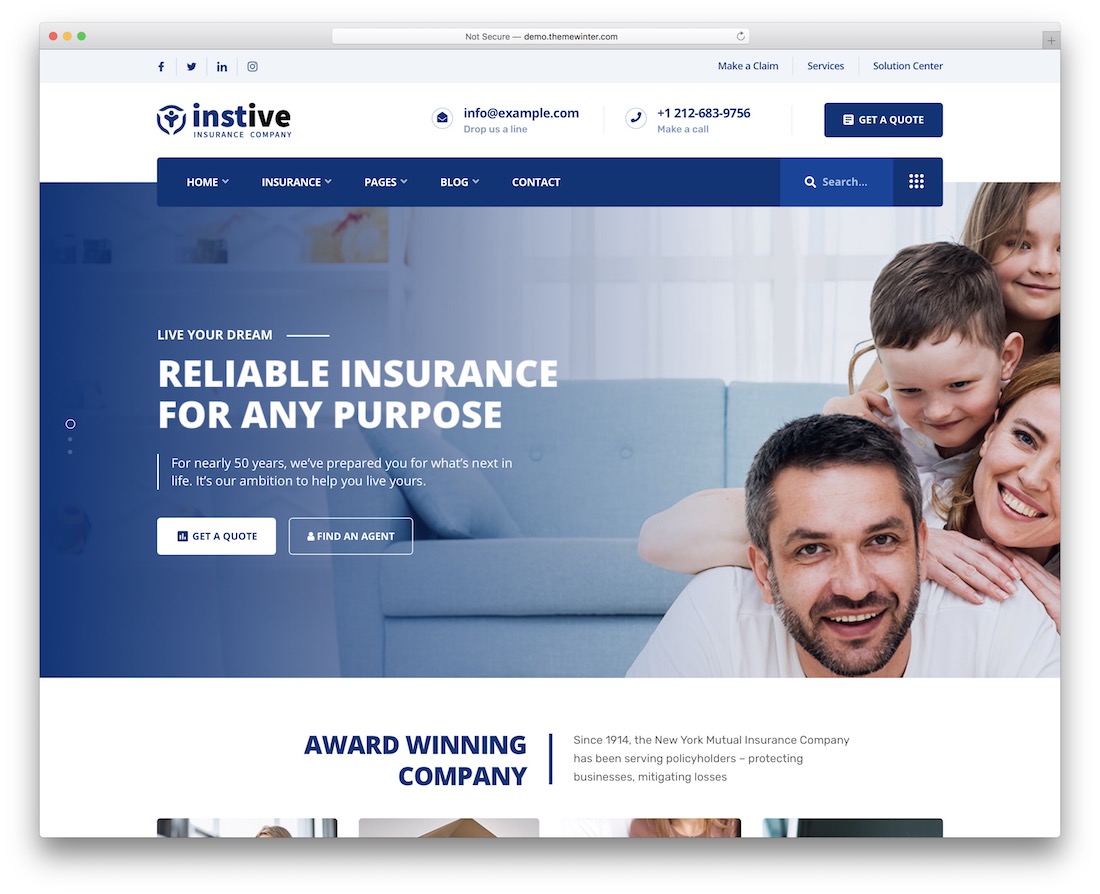
Future Trends In Insurance Website Design
The future of insurance website design is rapidly evolving. New trends are emerging that reshape how users interact with online platforms. Insurance companies must adapt to these changes. Embracing innovative design elements can enhance user experience.
Ai And Chatbot Integration
AI and chatbots are becoming essential in web design. They provide instant support and guidance to users. This improves customer satisfaction and engagement. AI can answer common questions quickly. It frees up human resources for complex tasks. Chatbots can guide users through insurance processes. This makes the user journey smoother and more efficient. Implementing AI can lead to faster response times. It can also reduce operational costs for companies.
Personalisation in User Experience
Personalisation is crucial in modern web design. It enhances the user experience significantly. Users expect content tailored to their needs. Personalized experiences increase user engagement and retention. They make users feel valued and understood. Websites can use data to offer customised content. This includes relevant policy suggestions and offers. Personalization can drive user loyalty and trust. It creates a more meaningful connection with the brand.
Frequently Asked Questions
What Are Insurance Website Templates?
Insurance website templates are pre-designed layouts for creating insurance-focused websites. They offer customizable elements suited for insurance agencies, brokers, and professionals. These templates save time and effort by providing a ready-made framework. Users can easily modify them to fit their brand and business needs, enabling quick and efficient website development.
Why Use Insurance Website Templates?
insurance agent website template simplify the website creation process. They offer a user-friendly interface, making customization easy. Templates are often optimized for SEO, enhancing online visibility. They provide a professional look without needing extensive design skills. Using templates ensures your website is responsive and functional across devices, crucial for attracting and retaining clients.
How To Choose The Best Template?
To choose the best template, consider your specific needs. Look for templates offering customization options, SEO optimization, and mobile responsiveness. Examine the design to ensure it aligns with your brand identity. Check user reviews and support options. Ensure the template integrates well with your preferred tools and platforms for seamless functionality.
Are Templates Customizable For Branding?
Yes, insurance website templates are customizable for branding. You can adjust colors, fonts, and images to match your brand identity. Templates often offer drag-and-drop functionality, simplifying design adjustments. They support adding custom content and features, allowing you to tailor the site to your specific business requirements and marketing goals.
Conclusion
Exploring insurance website templates, like an insurance agency website template or an insurance agent website template, can simplify your design process. These professionally crafted insurance website themes offer organized layouts, saving time and effort. Focus on features that meet your business needs and align with your service offerings. Ensure the template is mobile-friendly to enhance customer convenience and improve SEO.
Choose a design that reflects your brand identity and builds trust with visitors. Clear navigation and a polished appearance are key to a great user experience. With the right insurance website template, you can launch a high-converting, professional site in no time. Boost your online presence, generate more leads, and stay ahead of the competition. Make your insurance website stand out today with a theme that delivers both form and function.


